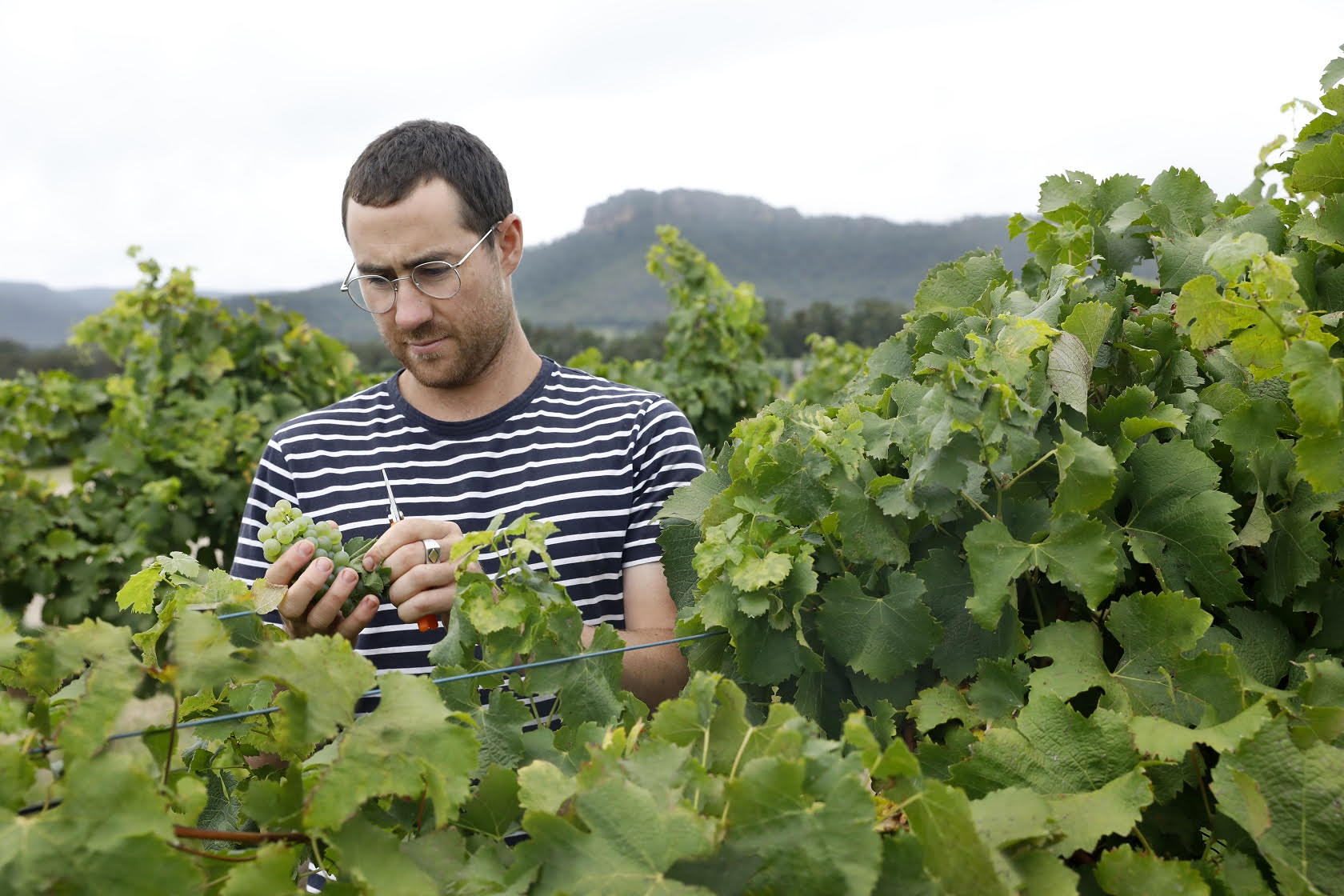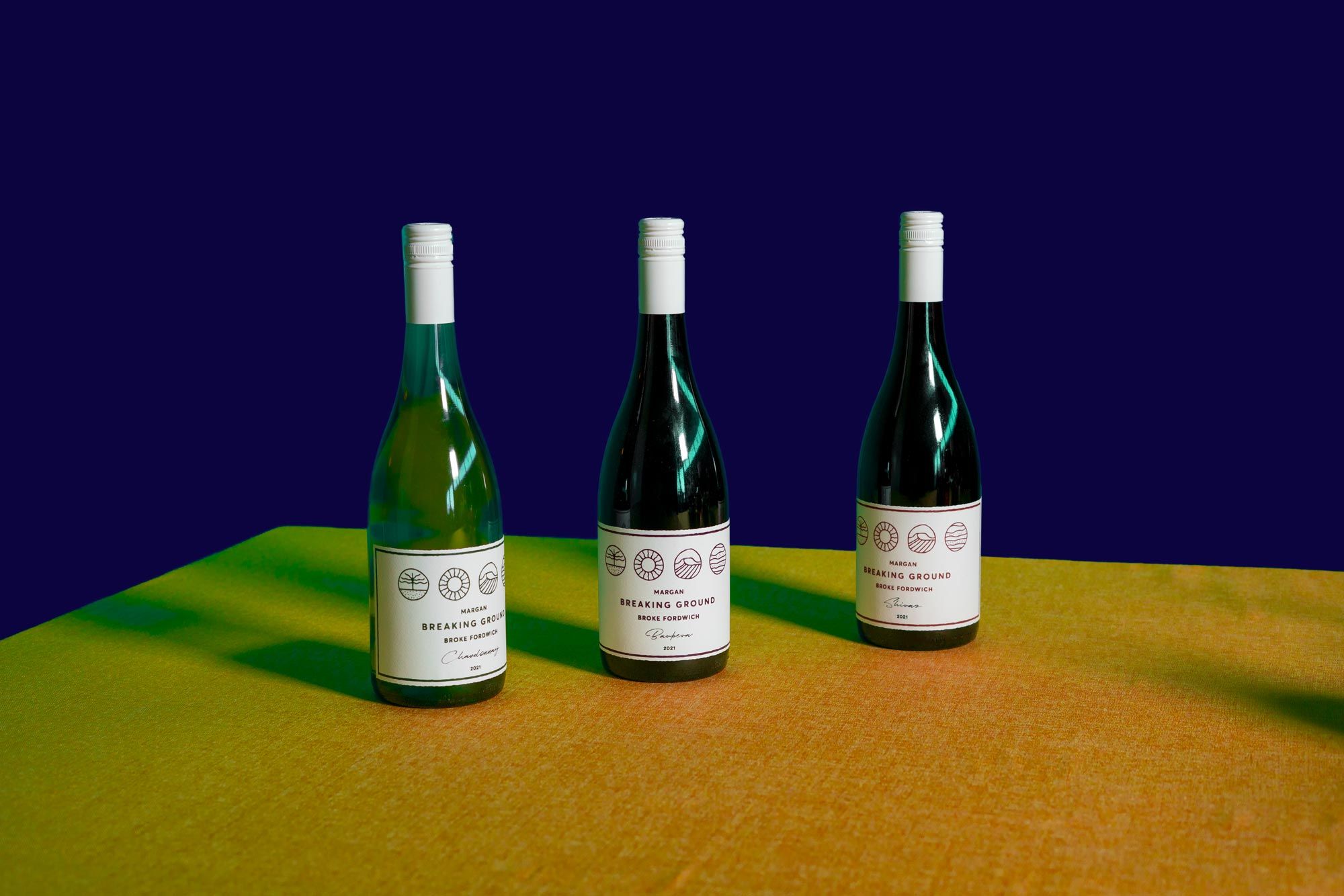This award-winning bartender and bar owner’s next role? Winemaker.
He's been the bartender behind one of Australia's best bars; now, Ollie Margan is getting back into the family business.

If you know a good bar bar when you see one, and you’ve visited Adelaide in the last five years or so, you should know Maybe Mae. It’s not just Adelaide’s best cocktail bar, it’s right up there with the best in Australia and the world.
The driving force behind Maybe Mae for much of its seven years of trade has been co-owner and bartender Ollie Margan. Margan and his team built a reputation for delicious drinks, using-forward thinking techniques and local flavours — the kind of drinks you just can’t get anywhere else. It’s a great bar.
Margan moved away from operations at the bar last year, and with deputy Nick Corletto stepping up to take the reins, took the chance to move back to the Hunter Valley and add another job description to his CV: winemaker.
Because the Margan name has some history in the Hunter Valley. Margan’s parents, Lisa and Andrew Margan, established their wine label in the Hunter in 1996 — Ollie is the third generation of his family in the winemaking game — and it’s under the family imprint that Ollie Margan has released his first suite of wines: Margan Breaking Ground semillon, chardonnay, albariño, barbera, and shiraz.
So what’s Margan trying to achieve with these wines? How has he found the transition from bartender and bar operator to winemaker?
Below, and lightly edited for clarity, I spoke to Ollie Margan to learn more.

So are you still involved in Maybe Mae or are you out of it?
I’m still as financially involved in Adelaide as I was. I stepped away from active service duties in October last year, I had to have a shoulder reconstruction. I was kind of forced out of that.
At the end of the day, doing what I’m doing now has been the plan since before I even got into bars, and remained that during my time doing that sort of stuff. And operationally I’m still involved, it’s just that my day job’s a little bit different.
So what do we call you now — do we call you winemaker Ollie Margan now?
That’s probably a little more appropriate to what I do day to day, yeah.
With that change in emphasis, what’s your proudest achievement to date with the bars?
Look, I think creating something I could comfortably step back from, you know? In the bar scene, owner-operator is what a lot of people are, and if you speak to any of them they’ll probably say the same thing: the greatest challenge is to create a system whereby you are superfluous, or the product is as strong in your absence as it is while you’re there.
I think I’ve left it in capable hands and I think that’s the most rewarding thing.
Tell us about the wines — what’s the big idea behind the wines that you’ve released?
Coming home, we’ve obviously got an established brand, but I’m coming with some fresh ideas around things. It was just about creating an avenue for me to explore some creative direction that I have that I would like to apply without mucking too much with what we’ve been doing for a long time, which is really strong.
I’m involved in the process across all our wines, but this suite of wine is maybe a little more indicative of where I’m at in my career. I’ve got some ideas based on my influences and my experience that I’d like replicate across the vineyards that we look after.
So I guess the overarching theme is wines of energy and texture. Focusing on the five key grape varietals that we [at] Margan do: semillon, albarino, chardonnay, syrah, and barbera, and really focusing on a purity of fruit and harnessing energy.
We’re looking at picking slightly earlier with some blocks, and certainly bottling earlier — taking those wines when they’re really quite tightly coiled [with a] beautiful acid line. And then looking at ways to bring in texture. For the albarino for example, using a bit of skin contact, and then that goes into a concrete tank rather than oak, which can let the wine relax a little a bit, or stainless steel which can make the wines seize up a little bit; concrete has a level of porousness to it and that mineral interchange helps give the wine a really nice tension. That counterplaying with the phenolic texture that you get from the skin contact.
With the barbera, using whole bunch in there to soften the acid slightly, but also to give it some chewy tannins — barbera is a varietal that has no tannin profile really but has really tight acidity.
So playing around with a few little techniques like that, and then releasing the wines really quite unadulterated: using indigenous yeasts, picking so that the acid doesn’t need to be adjusted in the winery, really picking on flavour and that pop of fruit so they’re not worked with at all, and we’re not filtering prior to bottling — just a little bit of a sprinkling of sulphur. Really just trying to capture the essence of the vineyard, not trying to make the most technically or traditionally ‘best’ wine, but trying to make a wine that’s truest to that fruit profile in that vineyard in that season.
I cracked the shiraz last night — is it the shiraz or is it syrah?
Well it’s the shiraz because that’s what we call it in the Hunter but I think it’s probably more akin to what people would call syrah, it’s quite light.
It’s got that little spritz to it as well.
Yeah. So that’s just the dissolved CO2 from fermentation, that tells you how fresh it is — that’s not something that’s happened in the bottle, that’s bottling right on the edge of it finishing its secondary fermentation. For me it gives it that really bright red fruits and acid pop.
What for you makes a great wine? What are you looking for?
A couple of things. For me, I look for engagement — that’s what I look for primarily. To me that engagement is relative to the context it’s being consumed in. So if I’m at a white tablecloth winemaker dinner, that level of engagement ‚ well that engagement probably comes from a wine of great technical skill and complexity and depth and intrigue, and maybe age. But if I’m sitting in a park on a picnic blanket in the sun, that level of engagement might look like high levels of acidity, maybe some bubbles, maybe some grip from some skin contact. So for me it’s all about engagement, but that doesn’t point a finger to one intended wine style.
You said before that these wines build on your influences and experiences — what are some of those?
I’ve been fortunate enough to make wine in a number of different countries, I’ve done vintages in Central Otago in New Zealand, made some really delicious pinot and riesling; got to deal with some really premium cabernet and semillon in Bordeaux in France; and then most recently spent some time making wine in the Adelaide Hills which gave me a whole different lens on looking at the winemaking process, a much less conventional lens.
So I take those different inspirations and the fact that I’ve grown up on a farm, and grown up around growing grapes as long as I can remember, that being the most important thing for me, echoing that process.
And then I probably learned quite a lot from cocktail making. Something that is really becoming a big part of the conversation in wine now is texture. But texture is probably the first thing I learned about making decent cocktails. And the interplay of the different components in a drink, and how that equals texture — whether it’s acidity of bitterness, or sweetness etc. How you can create mouthfeel? That’s definitely something I’ve taken into winemaking and I want my wines to drink like a perfectly balanced cocktail. I want you to be able to pull them apart as much or as little as you like, but on face value, there’s a refreshment there and there’s an engagement to the point where you want to go back for another sip, and you want to have more than one glass.
That’s crucial, right? How many cocktails have you had where it’s been interesting, but you don’t want another one?
Exactly right. But then you have that perfectly balanced Martini or a Daiquiri that’s been shaken with textbook precision and you can’t drink enough of them.
Hunter Valley semillon — you don’t see much of it outside NSW unfortunately, why is that?
It’s interesting. It’s probably Australia’s only properly iconic wine style whereby it is the best version of it without question in the world. It has some serious importance there. It comes from Australia’s oldest wine region. But I think the problem is, once upon a time it got pigeonholed as this style that was made really quite lean and mean whilst it’s young, and it had to be really old to enjoy this unctuous, rich developed character. Number one, cellaring white wines is definitely not cool with contemporary drinkers, and number two, drinking old white wine is not cool with contemporary drinkers. So it doesn’t surprise me that [semillon] doesn’t resonate outside of its home base.
The thing that’s happening now though is that people are working out some really interesting ways of interpreting the variety. People are going for more texture, and younger drinkability. That’s certainly what I’ve tried to achieve with mine as well. So by working with solids — once you process the fruit, rather than clarifying the juice and fermenting it and inoculating it with a neutral yeast strain to get it as lean a product as possible, you’re actually leaving it on some of its grape solids, using indigenous yeasts, and so you’re getting much more flavour production. And then after the fermentation, leaving it on its leaves, its dead yeast cells, to help build texture in the mid palate — you’re allowing for this really quite delicious and enjoyable wine that’s only quite young, which is not traditionally how we made it. There’s a number of people playing around with skin contact, and the use of solids, and barrel fermentation and a whole bunch of different things which is helping [semillon] come back to the fore.
I think the classic styles are still excellent, they’re still some of the best wines coming out of the Hunter, but in terms of creating a gateway for people to learn and access those wines properly, there’s some great contemporary iterations of the variety coming out at the moment.
What’s the next year look like for Ollie Margan?
It’s pretty difficult making plans too far ahead at the moment. Look, for me it’s about going back to school a little bit — it’s about knuckling down and really focusing on [what is] not a new trade for me, but a new focus. I want to get pretty good at farming and making wine, so yeah — just going to task. Hopefully we can travel a bit and I can get out and start showing some wines around the place.
But in the meantime, just driving a tractor.

